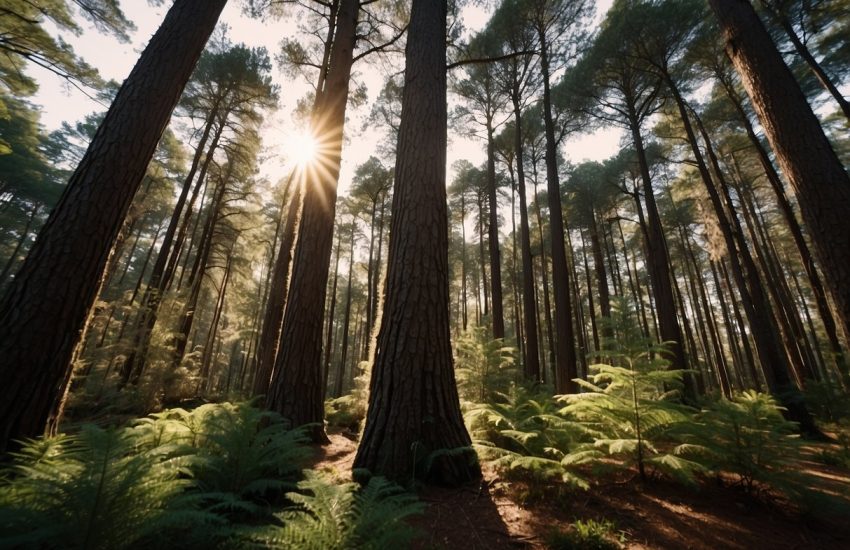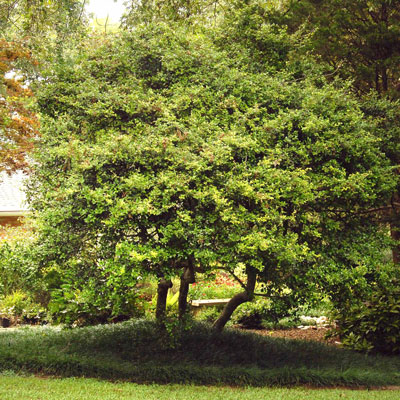Best Evergreen Trees to Plant In New York
Much of New York's terrain is covered in dark, evergreen conifers. From the leaf's tiny structure to the tree's overall design, these cone-bearing conifer trees are adapted to tolerate hard, cold climates. Despite their needle-like appearance, conifer leaves function quite similarly to the flat, broad leaves of an oak or sugar maple tree. The majority of conifers retain their needles all year.
Although pines are often mentioned when discussing evergreens, conifers include fir, spruce, hemlocks, and other species. But how can we distinguish between them? Here are some basic guidelines to help you identify the tree group.
12 Evergreen Trees to Grow in New York
Here is the list of the best evergreen to grow in New York state.
1. Douglas Fir
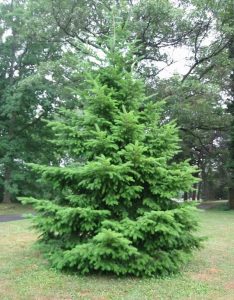
Plant douglas fir for its majestic, spire-like shape that evergreen fans adore. It looks wonderful massed as a screen in an evergreen landscape, even though it's frequently used as a lone tree. Although the douglas fir doesn't appreciate hot, dry winds, it thrives in soil wetness and atmospheric moisture environments. Depending on the source of the tree's seeds, its color might vary, with blue-green varieties being the most beautiful and robust.
2. Eastern Red Cedar
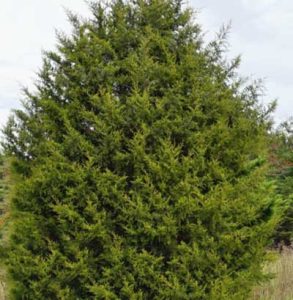
Eastern red cedars are so adaptable that they grow on dry, rocky hillsides and at the edges of wetlands. They also do well as windbreaks in rural areas and as city screens. Rich green foliage that becomes fiery brown-green in the winter can be found on this heavily branching juniper.
3. White Pine
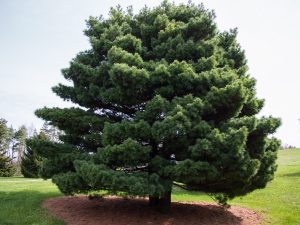
Since some white pine species can reach heights of 50 to 80 feet and widths of 20 to 40 feet, this evergreen requires a lot of space. However, columnar kinds also have a maximum height and width of 20 feet and 14 feet, respectively, making them ideal for screens in smaller yards. Fast-growing white pines have smooth, billowy textures that are a welcome change from the rigid appearance of many other evergreens. The trees are self-mulching due to the blue-green needles, which are appealing all year round, and occasionally drop part of them to the ground.
4. Concolor Fir

Similar to white pine, concolor fir may grow in a variety of environments. It is also known as white fir and does well in hot, dry climates and in the cold of winter, but it thrives on consistently moist soil and has adequate drainage. The common name is due to the white gloss on the blue-gray needles. Concolor fir serves as a specimen to obscure a view or paired with other trees in evergreen landscaping due to its distinctive needles, appealing conical shape, and tiered branches.
5. Norway Spruce

The Norway spruce stands out among other evergreens because it has the pyramidal structure many conifers have. Still, the stems can hang down gently because the horizontal branches extend upward. The result is stunning and unusual. Although Norway spruce can reach heights of 50 to 60 feet and widths of 25 to 30 feet, popular cultivars are often on the smaller side.
6. Deodar Cedar
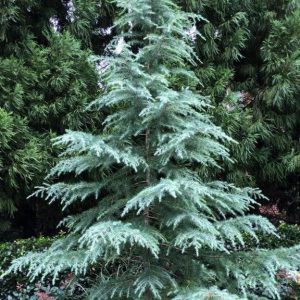
Deodar cedar, one of the few real cedars, is extremely versatile, grows quickly, and has dense branching when young. It produces a remarkable solo tree with blue-green needles and graceful, gently weeping branches that grow more artistic with age. It is ideal for a screen or as part of an evergreen landscape.
7. False Cypress
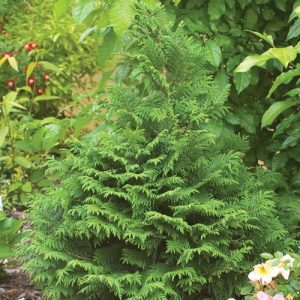
False cypress is a useful addition to your winter garden, and it comes in a wide range of kinds with various colors and shapes. It should come as no surprise that it's great for increasing privacy. Some cultivars of false cypress can be pruned like a hedge, while others can grow as fluffy, deformed, or twisted as they see fit. Blue-gray to golden-green are the available hues.
8. Leyland Cypress
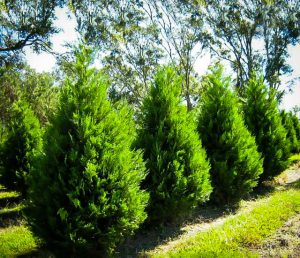
Leyland cypress, another warm-climate evergreen tree for seclusion, is ideal for screens due to its columnar structure and consistently vibrant color. There are cultivars with yellow, gray, or brilliant green foliage if the feathery, blue-green foliage doesn't appeal to you.
9. American Arborvitae
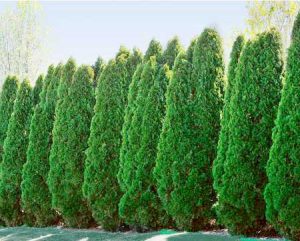
American arborvitae sometimes referred to as eastern arborvitae, is the go-to evergreen for fencing because of its long lifespan. The most common types reach maturity at a significantly shorter height than in the wild, maturing at 10 to 15 feet, which makes them ideal for year-round privacy in evergreen landscaping. Although American arborvitae is resilient and adaptive, deer browsing is its major issue (wrap arborvitae in burlap in the winter or spray with a deer repellent to ward off deer).
10. Yew

Some old yew specimens, known as the "tree of immortality," have lived for thousands of years. Yews are frequently utilized as foundation plantings and hedges in evergreen landscaping. The yew trees' vibrant red berries and dark green leaves make for a welcoming sight in the winter. Birds also appreciate the yews' shelter.
11. Spartan Juniper
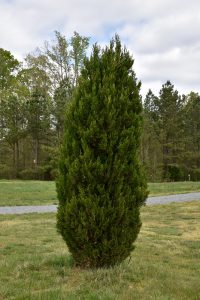
The bushes have a very appealing and sleek shape, making your neighbors envious. This one tolerates drought well and needs little upkeep. These evergreens are adaptable because they can serve as landscaping for your backyard or garden. Additionally, if you have a tiny or narrow space, using this one to add fresh plants is a perfect decision. It can also flourish in dry conditions, so there are no longer any concerns about the heat that arrives in New York.
How to Plant Evergreen Trees?
● Choose a Planting Location
Spend time selecting the ideal location for planting your tree because it is better to avoid attempting to transfer it once it has been established. Select a location in your yard based on whether it needs sun or shade. Consider how wide it will go and leave enough space, primarily from buildings, but also from fences and walls. Plant well within your property so that you have control over the growth and trimming of your trees. If you plant right on your property line, your neighbor has the legal right to chop back your tree to the property line, which might not look very pleasant.
● Prepare the Planting Site
The success of your tree depends on the quality of the soil you prepare. Use your soil, no matter how it is. Never attempt to dig a hole and fill it with soil that you purchased elsewhere. Simply add more organic material if your soil is deficient. You aim to create a sizable patch of looser soil that the new roots can easily penetrate, gaining food along the way and swiftly establishing. You need to dig as deep as your shovel will go in an area at least three times the pot's diameter. Remove any stones larger than your hand and weed roots from the area. Smaller stones can be left in the soil, and it is not a good idea to sieve the soil to remove them because they can aid drainage. Mix the organic matter and fertilizer into the soil by turning it over, then level it off and get ready to plant. After planting your tree, save some of the organic material you used as mulch.
● Prepare the Tree
Give the pots a good soak in water the night before planting. Even though the soil around it is humid, your tree may still experience dryness if the root ball is dry when you plant it.
● Digging the Hole
Then, in the precise location where you want your tree to go, dig a hole two or three times the pot's diameter but just slightly deeper. If you have dug a hole more profound than that, press the earth in the bottom of the hole down with your foot to create a solid base for the tree. This will stop it from falling into the hole after you've planted it more profoundly than you intended.
● Plant the Tree
Place the tree in the center of the hole, ensuring the top of the rootball is level with the surrounding soil. Replace roughly 75 percent of the soil in the hole, packing it firmly around the tree's roots. Do the same if you turn the pot on, but when you're done, cut the pot in half and carefully pry the cut pot off of the ground. Finish compacting the dirt; a light foot or hard hand pressure is sufficient.
● Water the Tree
Now, add a lot of water to the hole and let it soak into the ground and the root ball. Utilize a lot of water, then let it drain completely. This will provide a lot of water where it is needed, near the roots.
Conclusion
Winters are slightly lighter thanks to evergreen trees, and the growing season is significantly lusher. Evergreen trees are planted in the public right-of-way by Trees New York. Schools, playgrounds, community gardens, senior centers, libraries, green streets, co-ops, and church lawns are just a few places where you can plant trees.
With the help of trees, Trees New York promotes environmental awareness and takes action. All tree plantings are carried out in collaboration with a nearby community organization or school. Residents of the neighborhood and school children are given a lesson on urban forest and tree stewardship; they also assist in planting the tree and pledge to care for it over the long term.

